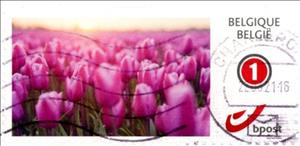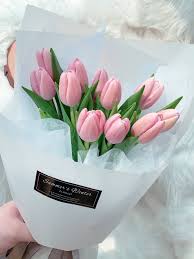Stamp: Floral Beauty (Personalized and Private Mail Stamps 2020)
Floral Beauty (Personalized and Private Mail Stamps 2020)
31 August (Personalized and Private Mail Stamps ) within release Belgium : MyStamps goes into circulation Stamp Floral Beauty face value 1 No Face Value
| Stamp Floral Beauty in catalogues | |
|---|---|
| Colnect codes: | Col: BE-PER 2020-02/5 |
Stamp is square format.
Printed in panes containing two sets of five designs. Face value € 0.98 per stamp on day of issue, but sold by BPost in full panes of ten for € 10.80Also in the issue Belgium : MyStamps:
- Booklet Pane - Floral Beauty face value 5*1;
- Stamp - Floral Beauty face value 1;
- Stamp - Floral Beauty face value 1;
- Stamp - Floral Beauty face value 1;
Stamp Floral Beauty it reflects the thematic directions:
A flower, sometimes known as a bloom or blossom, is the reproductive structure found in plants that are floral (plants of the division Magnoliophyta, also called angiosperms). The biological function of a flower is to effect reproduction, usually by providing a mechanism for the union of sperm with eggs. Flowers may facilitate outcrossing (fusion of sperm and eggs from different individuals in a population) or allow selfing (fusion of sperm and egg from the same flower). Some flowers produce diaspores without fertilization (parthenocarpy). Flowers contain sporangia and are the site where gametophytes develop. Many flowers have evolved to be attractive to animals, so as to cause them to be vectors for the transfer of pollen. After fertilization, the ovary of the flower develops into fruit containing seeds. In addition to facilitating the reproduction of flowering plants, flowers have long been admired and used by humans to beautify their environment, and also as objects of romance, ritual, religion, medicine and as a source of food.
Flora is the plant life occurring in a particular region or time, generally the naturally occurring or indigenous—native plant life. The corresponding term for animal life is fauna. Flora, fauna and other forms of life such as fungi are collectively referred to as biota. Sometimes bacteria and fungi are also referred to as flora, as in the terms gut flora or skin flora.
Tulips are spring-blooming perennial herbaceous bulbiferous geophytes in the Tulipa genus. Their flowers are usually large, showy, and brightly coloured, generally red, orange, pink, yellow, or white. They often have a different coloured blotch at the base of the tepals, internally. Because of a degree of variability within the populations and a long history of cultivation, classification has been complex and controversial. The tulip is a member of the lily family, Liliaceae,along with 14 other genera, where it is most closely related to Amana, Erythronium, and Gagea in the tribe Lilieae.



